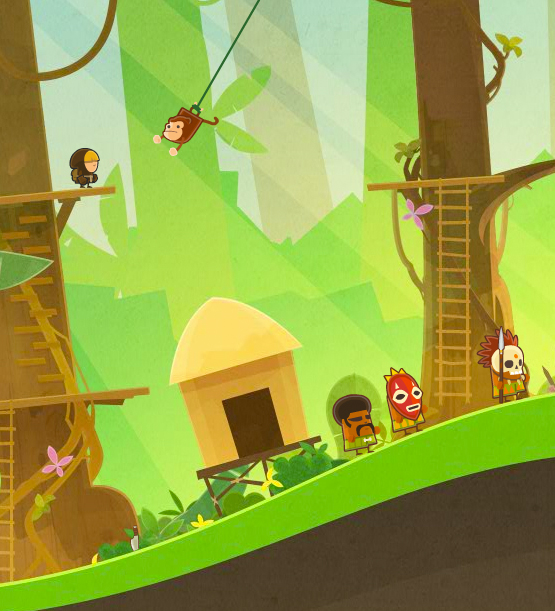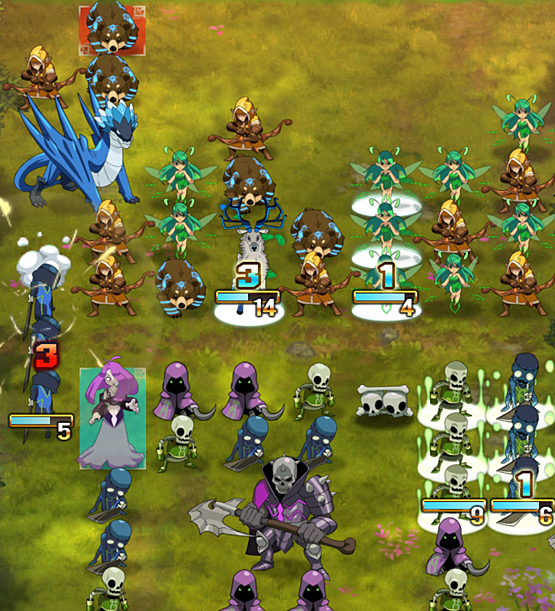Dan Taylor, who participated in the development of Killzone, Medal of Honor and Max Payne 3, on the pages of Gamasutra spoke about the main ten principles of game design.
As an example in his articles, Dan cited console projects, and we decided to see how relevant these same principles are in the mobile market.
The first principle
Navigating the game should not only be convenient and intuitive, it should also be fun (is fun to navigate).To do this, you need to use a “visual language” to guide the player to the main goal of the level and hide various secrets from him.
By language, Dan means a whole bunch of elements – level layout, lighting, any markers and hints.
In part, this principle is not neglected, for example, in Angry Birds Star Wars II (at least in the part where the main goal is obvious). It’s easy to pass the one/ two star level, but to get three stars or any secret, you need to try.
Principle two
Don’t rely on words to tell a story.Dan compares a good story to a broken circle.
The author draws a circle, but does not close it, leaving a gap that readers must fill themselves. But the author should be careful. If the gap is insignificant, no one will notice it, if it is too large, readers risk not understanding the plan.
The same applies to game design.
Some things, of course, should be told directly (cut scene/task), but the story should also be told by the levels themselves and how the hero progresses through these levels.
Of course, here, Dan’s speech is primarily about singles. It is difficult to apply this to free-to-play titles. In the “Heritage of Transylvania”, for example, all tasks go exactly in the text (and this does not spoil the project, on the contrary). So an excellent example of Dan’s rule is the game Tiny Thief, in which there is no text at all.
The third principle
Tell the player what needs to be done, but not how.The player should not loop in three pines after starting the game, trying to figure out what they want from him.
This annoys the player. Therefore, it is important to set a specific goal for him. However, it is not necessary to say how to solve it.
A good example is the “Crocodile Swamp” from Disney Mobile. The player knows what to do – to provide Swampy with water, but not exactly how.
The fourth principle
Constantly teach the player new things.From level to level, showing new mechanics, new features, modifiers that turn the gameplay upside down is a great way to keep the current player.
This, by the way, is the key difference between the games of ten years ago and the current ones. If earlier the player had only one mechanic for the whole game, now he has become much more capricious. He doesn’t want to do the same thing throughout the project.
Therefore, if you want to keep him, entertain him.
In addition, additional mechanics, demonstrated not immediately, make the gameplay deeper.
However, a good example did not come to mind. However, this approach seems to be the most interesting in the case of free-to-play projects. For example, low–level players can only build houses, those who are higher – go hiking on neighbors, the coolest – unite in clans and fight for spheres of influence. But here it is important – progressive development.
In other words, I built a fort, collected carrots and visited a friend (the first three days in the game), good girl, now you can build troops. I went through a military PvE campaign, here’s PvP for you (seven more days of play). Gathered a clan? Now you can join the kingdom and fight for spheres of influence between them and for influence in them (the first month of the game).
The fifth principle
Surprise me!In fact, this principle is very close to the previous one, but it does not concern mechanics, but, to a greater extent, the conditions under which this or that level works.
Two examples came to mind at once. Firstly, Plants vs. Zombie 2, in which the player is constantly offered levels with different conditions of passage. Thanks to this, you don’t get tired of the gameplay.
Secondly, Might & Magic: Clash of Heroes, where in every third or fourth battle it is necessary to observe any additional conditions (not to hurt the druid, protect the Great Acorn, and so on).
To be continued!
A source: gamasutra.com




